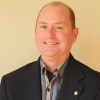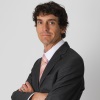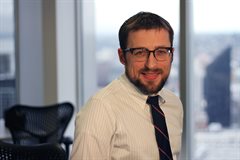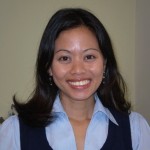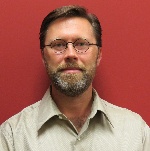28 Aug / 2015
“SEU Speaker Inspires” Organization of the Month: Juvenile Diabetes Research Foundation
In an effort to “Pay It Forward,” SE University is happy to announce our “SEU Speaker Inspires” program in which our speakers can designate a charity/organization of their choice for SE University to make a donation to help improve our world.
In July 2015, Whitney McNulty, PE, from BL Companies, gave a talk on Flexural Design of Single Angle Members for SE University. He chose the Juvenile Diabetes Research Foundation (http://www.jdrf.org/) for the donation of the month.
Whitney said this about his choice, “I chose the Juvenile Diabetes Research Foundation for personal reasons. Both of my children have juvenile onset diabetes, also known as type 1 diabetes. This isn’t the diabetes for which you see all of the drug commercials on TV. My son who is now 22 developed the disease when he was 11. My daughter, now 19, became diabetic when she was 10, less than one month from the anniversary of my son’s date. When my son became diabetic my wife and I had no history of diabetes in either of our families. The doctors told us there was less than a 2% chance that siblings who are not twins will both develop the disease, so we thought that our daughter was safe. Now both of my children have insulin pumps that they wear 24 hours a day, everyday. They test their blood at least 7 times a day, and we have experienced very high and low blood sugars. We’ve had a few visits from 911 personnel, including one time when the police had to break down a door to get into my house to help my son. You can’t tell from looking at my children that they are diabetics, unless you notice their pumps, and they try to not let the disease limit their lives. My prayer is that a way to prevent this condition is discovered, and that in the meantime, the lives of type 1 diabetics can be made easier by the work done by the JDRF.”
Thank you, Whitney, for helping structural engineers with your SE University session, and for your designation of the Juvenile Diabetes Research Foundation as our SEU Speaker Inspires Organization of the Month!
[seublog]
29 Jul / 2015
The Value of Being Patient
by Lisa Willard, PE
In the Dale Carnegie Training book “Make Yourself Unforgettable”, one of the chapters is devoted to patience, defining it as “the ability to wait without experiencing anger, anxiety, or frustration.” One thing I find interesting about patience is that it is something over which I have complete control. No one else can make me impatient; someone else’s actions may lead to me being impatient, but I have the ability to define my attitude, and can choose to be patient in the situation.
As an example, someone may not return a call promptly, and I need information from that person before I can proceed with something I’m working on. If I choose to be impatient, I waste time and mental energy being upset, not to mention the fact that I might eventually “blow up” at the person by phone or in an email. If I choose to be patient, I can refocus my mind and time on another project or task, taking advantage of that time to get other things done. In addition, I avoid a confrontation with the person that might affect our relationship.
As a young professional, I made a reservation for a non-smoking room at a hotel, and when I arrived at the hotel (at earlier than normal check in time), there were no non-smoking rooms available. My first instinct was to react with frustration – after all, I had made a reservation (has everyone seen the Seinfeld clip where Jerry arrives to pick up his rental car, but there are no cars left?). My boss quickly pulled me aside, and asked if, based on my attitude, I thought the front desk staff was going to be willing to help me get a non-smoking room? I realized that he was right – I needed to exhibit patience in this situation. If I were willing to wait an hour or two, a non-smoking room would likely be available. I returned to the front desk, apologized for my behavior, and agreed to wait for a few hours. I ended up with a non-smoking room, and rest of the trip went smoothly.
I learned a powerful lesson that day, one that has served me well over the years. People appreciate when others do not react with impatience (anger, anxiety, frustration), and are typically more willing to be helpful in that situation. What are some situations where you have seen patience (or impatience) exhibited, and what was the outcome in those situations? Let us know in the comments below!
In an effort to “Pay It Forward,” SE University is happy to announce our “SEU Speaker Inspires” program in which our speakers can designate a charity/organization of their choice for SE University to make a donation to help improve our world.
In June 2015, Seth Guthrie, SE, from Bentley Systems, Inc. gave a talk on Software Default Settings and Effects on Structural Models for SE University. He chose Engineers Without Borders (http://www.ewb-usa.org/), for the donation of the month.
Seth said this about his choice, “The mission of Engineers Without Borders to “build a better world through engineering projects that empower communities…” is perfectly aligned with the Bentley motto, “Sustaining Infrastructure” and my own guiding principles as an engineer. I think EWB is one of the most effective groups actively working on global problems today.”
Thank you, Seth, for helping structural engineers with your SE University session, and for your designation of Engineers Without Borders as our SEU Speaker Inspires Organization of the Month!
[seublog]
30 Jun / 2015
“SEU Speaker Inspires” – Organization of the Month: University of Washington Department of Civil Engineering
In an effort to “Pay It Forward,” SE University is happy to announce our “SEU Speaker Inspires” program in which our speakers can designate a charity/organization of their choice for SE University to make a donation to help improve our world.
In May 2015, Ian McFarlane, PE, SE, from Magnusson Klemencic Associates gave a talk on Mat Foundations and Soil Structure Interaction for SE University. He chose University of Washington Department of Civil Engineering (http://www.ce.washington.edu/), for the donation of the month.
Ian said this about his choice, “UW CEE not only gave me a fantastic technical background and got me involved in exciting research topics, but they also provided an excellent balance by frequently involving practicing engineers in the curriculum. This frequent exposure to practicing engineers was very beneficial to me and ultimately led to my position at MKA which makes me extremely grateful!”
Thank you, Ian, for helping structural engineers with your SE University session, and for your designation of University of Washington Department of Civil Engineering as our SEU Speaker Inspires Organization of the Month!
30 Jun / 2015
Top Qualities – Positive Attitude
We were slow to get responses from last month’s article soliciting what characteristics of your best supervisors or colleagues inspired you to always improve and become better. So, for this month I wanted to provide my own reflection. My story comes from when I was a co-op student at Purdue living with my aunt & uncle in Indianapolis for a combined 5 semesters. They are wonderful people and I learned a lot by living there.
I would say the trait they had that was most inspiring was a positive attitude. Despite the many challenges of life, I can’t remember them ever having a negative response to anything. They focus on the positive side of things and seem to always respond in a helpful way, even in difficult situations. I always felt better after being around them and inspired to work hard for a positive outcome.
Have you ever noticed anything similar with people you know – where you always feel better after a conversation with them and feel inspired to accomplish more and have a more positive impact on others? What if we all could work on this trait each and every day? Any time you sense having a negative response to a situation, think about it before you react and either don’t say anything negative, or come up with a positive response.
We look forward to hearing your feedback and ideas. Have a wonderful and safe July!
In an effort to “Pay It Forward,” SE University is happy to announce our “SEU Speaker Inspires” program in which our speakers can designate a charity/organization of their choice for SE University to make a donation to help improve our world.
In April 2015, Cathleen Jacinto, PE, SE, gave a talk on Checklists to Assist the Structural Engineer During Construction Administration for SE University. She chose Cancer Research Institute (http://cancerresearch.org), for the donation of the month.
Cathleen said this about her choice, “Cancer Research Institute is a great organization advancing research in several types of cancer immunology, a disease affecting millions of people.”
Thank you, Cathleen, for helping structural engineers with your SE University session, and for your designation of Cancer Research Institute as our SEU Speaker Inspires Organization of the Month!
[seublog]
26 May / 2015
Top Qualities of People Who Make you Better?
Have you ever heard the comment that one of the ways to constantly improve is to “hang around successful people” who inspire you? Jeffrey Gitomer, in his book “Little Gold Book of Yes! Attitude”, says: “If you want to achieve positive, you have to surround yourself with it and live it.” (page 59)
We would like your feedback to learn what are the characteristics of your best supervisors or colleagues that inspire you to always improve and become better?
We will report the results (anonymously – your name will not be used) in a future article, for all to benefit. To provide your feedback, simply e-mail Brian.Quinn@FindYourEngineer.com. We look forward to hearing from you!
27 Apr / 2015
Using Checklists to Establish a Higher Standard
by Cathleen Jacinto, SE, PE
Springtime tends to yield several project deadlines as construction season comes into full swing. In the midst of a busy season, QA/QC and project checking may perhaps fall to a lower priority to meet critical deliverables.
During these times, one of the most basic organizational tools – the simple checklist – can improve the proficiency of teams and individuals performing complex tasks. Effective checklists can form the backbone for a project’s success, a team’s communication, and an engineering office’s QA/QC standards. Checklists establish a higher standard of baseline performance, while protecting against or minimizing failures.
Below are a few tips to implementing engineering design or construction checklists:
- Prioritize the completion of checklist items by deadlines – Schematic Design, Design Development, Permit, Construction Documents, etc. Add internal dates for completion of tasks
- Assign team members to address specific checklist items
- Use checklists as a teaching tool – A way to transfer knowledge from experienced engineers to a junior team of engineers
- Set a recurring appointment on your calendar to commit perhaps an hour biweekly to review your or your office’s checklists
- After you experience any ‘lesson learned’ on a project, add this to your checklist to avoid repeating the same mistake
- Set a good example – If a project manager uses checklists, it is more likely his/her team will practice the habit of using checklists
However, the challenge is committing time to develop and implement checklists within aggressive project schedules. There are checklists available as part of our SE University subscription (and part of the SEU Resource Center) that will hopefully reduce your time in developing standards. We encourage the use of our checklists as a template to fit your office and project priorities. A few checklists released thus far include a Coordination Checklist for Elevator Design, Structural / Architectural Coordination Checklist, and a Steel Shop Drawing Review Checklist. Please see this link to a full summary of SEU Resource Center Documents available when you log into the SEU Resource Center.
The first 25 people to e-mail Brian.Quinn@FindYourEngineer.com will be given a checklist of their choice. Simply let Brian know which one you would like.
We hope you will find the tips above and the resources we offer helpful for you and your office!
24 Apr / 2015
“SEU Speaker Inspires” – Organization of the Month: Tennessee Technological University
In an effort to “Pay It Forward,” SE University is happy to announce our “SEU Speaker Inspires” program in which our speakers can designate a charity/organization of their choice for SE University to make a donation to help improve our world.
In March 2015, Otto Schwarz, PE, SE, from Ryan Biggs Clark Davis, gave a talk on Concrete Slabs on Grade for SE University. He chose his alma mater, Tennessee Technological University, for the donation of the month.
Otto said this about his choice, “Tennessee Tech gave me a firm base of knowledge for all I have done since and I am very grateful for the professors who dedicated their efforts toward the engineering student body.”
Thank you, Otto, for helping structural engineers with your SE University session, and for your designation of Tennessee Technological University as our SEU Speaker Inspires Organization of the Month!
[seublog]
20 Mar / 2015
Great Things Never Come From Comfort Zones
by Cathleen Jacinto, SE, PE
“Always do something that makes you uncomfortable, or puts you in a position to meet new people or do things that you wouldn’t do otherwise. And you’ll be surprised what kind of result comes out of it… that kind of experience is going to create overall growth.”
One might say that these words by Avery Bang, CEO of Bridges to Prosperity, may fall in the ‘easy-to-say, harder-to-do’ category. However, Avery has shown how she has put these words into action through her work in Bridges to Prosperity, a non-profit organization that focuses on building bridges in underdeveloped communities.
On the Bridges to Prosperity website, Avery Bang is described as one of ENR’s Top 25 Newsmakers of 2012. Avery was also honored on ENR Mountain Region’s Top 20 Under 40 list in 2013, and was selected as one of American Society of Civil Engineers (ASCE) Fresh Faces in 2011, recognizing the top ten Civil Engineers under 30. Avery is a Distinguished Young Alumni of The University of Iowa, recipient of the Recent Alumni Award from The University of Colorado at Boulder, and received an honorary doctorate degree from Clarkson University in 2014.
I had the opportunity to hear Avery speak at the SEAOI Midwest Bridge Conference in Chicago, IL. A motivating speaker, Avery inspired her structural engineering audience with a fresh perspective of how her decision to study abroad in college as well as her desire to build led her to discover her passion to build bridges and make a positive impact. “I returned a different person. For the first time, I realized the privilege I’d been given. I appreciated the opportunity, and I really wouldn’t settle for anything less than profound.”
We invite you to invest 14 minutes to watch this 2012 inspiring talk by Avery Bang.

